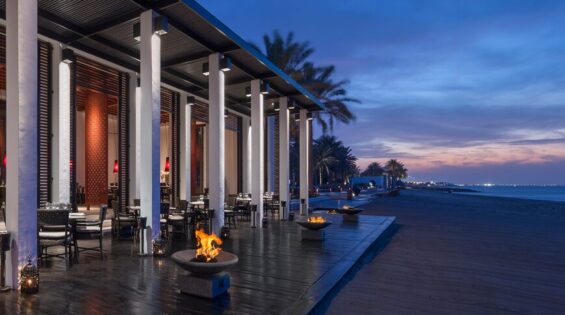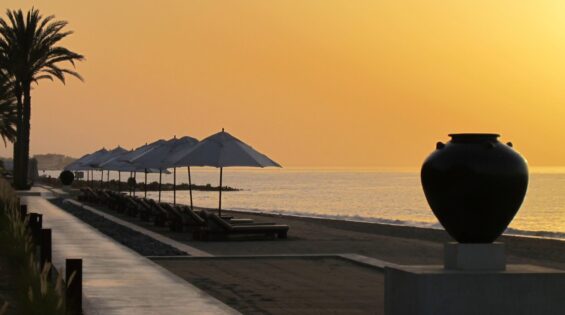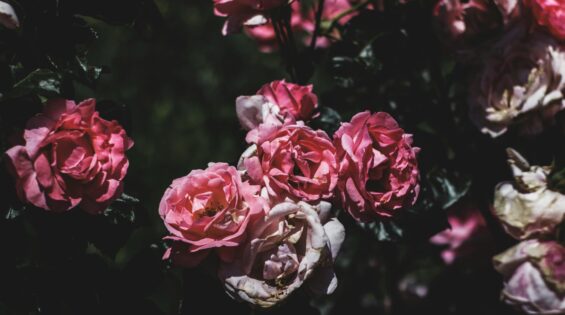A Night at the Opera… in Oman
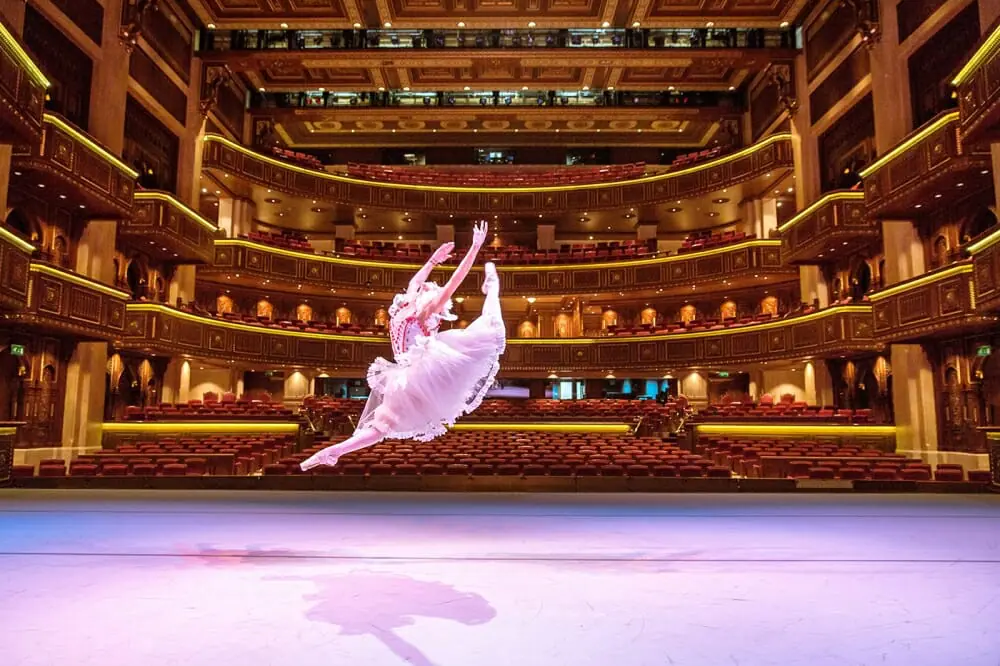
“Would sir care for some Mozart? Or perhaps you prefer Puccini?” asks Abdul Rashid as we pull away from The Chedi Muscat and into the balmy evening.
Over the course of a long travel writing career, I’ve had numerous exchanges with drivers in foreign lands. Some – the ones that have ended with me jamming in my earphones in a bid to cancel out the din of Hindi techno or the warbles of over-familiar MOR slush — have even been about music. It’s rare though that a driver has chosen to consult with me on my stereo preferences. Even more remarkable is the fact the options presented involve a heavyweight aria-battle between The Marriage of Figaro and Madama Butterfly.
Perhaps I shouldn’t be too shocked. As visitors familiar with the country will know, Oman is famous for applying refinement to the tourism experience in the Gulf region. And this eye for detail is written into the DNA at The Chedi Muscat, my sumptuous digs during my stay in the country’s capital.
Since arriving at the property I’ve scrubbed and washed with Italian toiletries by Acqua di Parma and feasted on the Omani seafood platter – an impeccably presented selection of fresh marine manna — at The Beach Restaurant, the hotel’s signature seafood restaurant.
Therefore, it jibes that I am being whisked by Mercedes S400 from the hotel to the Royal Opera House Muscat in the company of Arabia’s most urbane chauffeur. Given such treatment, it’s hard not to feel a bit special. “I’ll be waiting here to pick you up in two hours,” says Abdul, flicking a switch to open the wing doors and depositing me on the grand, polished courtyard that fronts the opera house.
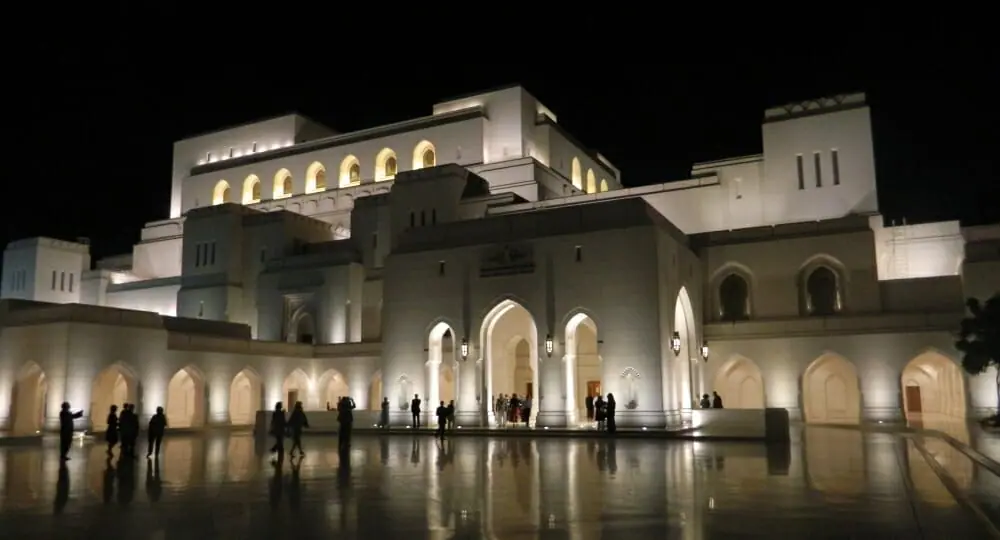 The likes of Andrea Bocelli, Renée Fleming and Yo Yo Ma have all graced the stage at the Royal Opera House Muscat. (Credit: Paasikivi)
The likes of Andrea Bocelli, Renée Fleming and Yo Yo Ma have all graced the stage at the Royal Opera House Muscat. (Credit: Paasikivi)
As I make my way through the entrance of the castle-like building – a hub for the arts in Muscat since opening back in 2011 – I’m as yet unaware of any chink in my amour. Glamourous ladies in abaya and ballgowns accompany men in spotless dishdashi and tuxedoes. They filter through the door ahead of me, their expensive scents perfuming the palatial lobby.
I prepare to make my way past security, eager to complete my initiation as a newly minted member of Muscat’s cultural corps d’elite. I imagine how I am presenting myself. An upwardly mobile Scotsman with Merc for a ride and a taste for the rarefied.
“I’m afraid you’ll need to tuck your shirt in sir,” says the doorman, discreetly puncturing the illusion. “You’ll need a jacket as well. Luckily we’ve got some spare ones we keep handy for such occasions.” Even if the dress requirements are on the strict side, it’s worth getting spruced up for an evening at the Royal Opera House Muscat. In 2009, when I was a frequent visitor to Muscat as editor of a guide to Oman, the ROH Muscat was one of the most discussed new projects in the country.
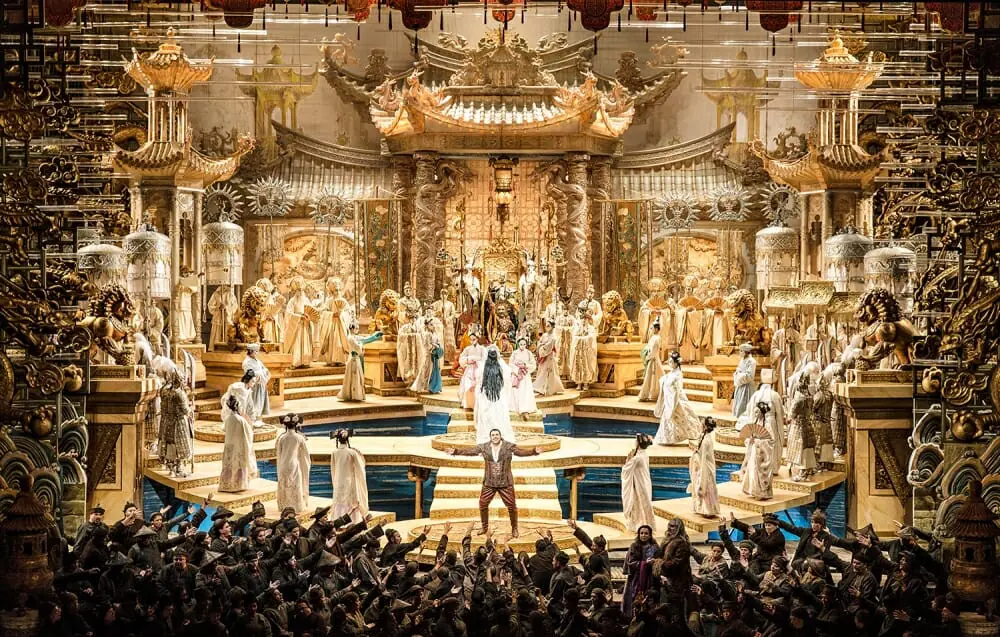 The ROH Muscat officially opened Oct. 12, 2011 with a production of the opera Turandot by Giacomo Puccini, conducted by Spanish tenor Plácido Domingo. (Credit: Khalidalbusaidi)
The ROH Muscat officially opened Oct. 12, 2011 with a production of the opera Turandot by Giacomo Puccini, conducted by Spanish tenor Plácido Domingo. (Credit: Khalidalbusaidi)
Conceptualised around the turn of the millennium by the nation’s revered ruler, His Majesty Sultan Qaboos bin Said, the venue was seen as a good way to advance Oman’s cultural capital. The idea was a hit from the word go. Indeed, I remember attending numerous gatherings involving Muscat’s creative community where the opera house was often discussed in tones of anticipation.
I never got the chance to see the finished article – until now that is. But it’s fair to assert that the 1100-seat facility has fulfilled its remit as a symbol of Oman’s growing stature. Since its grand inauguration by His Majesty in 2011, the ROH Muscat has played host to luminaries including Italian director and opera producer Franco Zeffirelli, US jazz titan Wynton Marsalis and superstar soprano Renee Fleming among many others. Spanish tenor Placido Domingo, who was part of the venue’s inaugural roster and has since returned three times, declared ROH Muscat “a cultural gem”: no small compliment from a multiple Grammy winner and a living legend of opera.
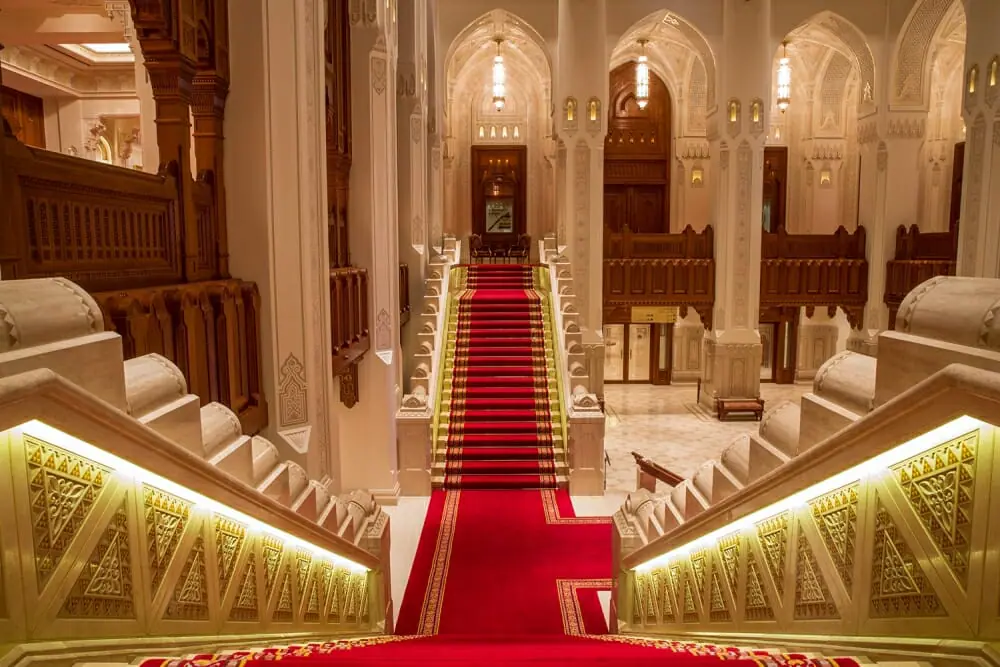 Burmese teak, Italian marble and crystal chandeliers from Austria accent the main lobby. (Credit: Khalidalbusaidi)
Burmese teak, Italian marble and crystal chandeliers from Austria accent the main lobby. (Credit: Khalidalbusaidi)
Indeed, the ROH Muscat is revered far beyond the Middle East for an eclectic annual roster that runs the gamut of high culture: taking in everything from opera and classical music, to lavish theatre productions, flamenco, tango, and jazz. Unfortunately, I’ve narrowly missed a performance by Cuban pianist and arranger Chucho Valdes, a personal favourite, who rolled into Muscat a fortnight before my visit. But as I gear up for a performance of Antar and Abla — a classic Arab opera depicting a love story dating back millennia — in the company of Umberto Fanni, Director General of ROH Muscat, I gain a better appreciation of the venue’s broad-ranging appeal.
“As the leading arts and culture organisation in the Sultanate, the Royal Opera House Muscat has succeeded in bringing cultures from abroad to Oman’s doorstep in ways that audiences find not only entertaining and educational but also uplifting and motivational,” Fanni tells me as we wait for the impeccably dressed ushers to announce the start of the show. “Muscat has demonstrably become a capital for opera and world culture as leading companies and singers performing at ROH Muscat spread the word in international social and opera circles.” With that, we are summoned. The murmur of the audience is silenced as the orchestra strikes up. Moments later, the male lead announces himself with a flourish, his lusty tones resonating around the auditorium courtesy of the state-of-the-art sound system.
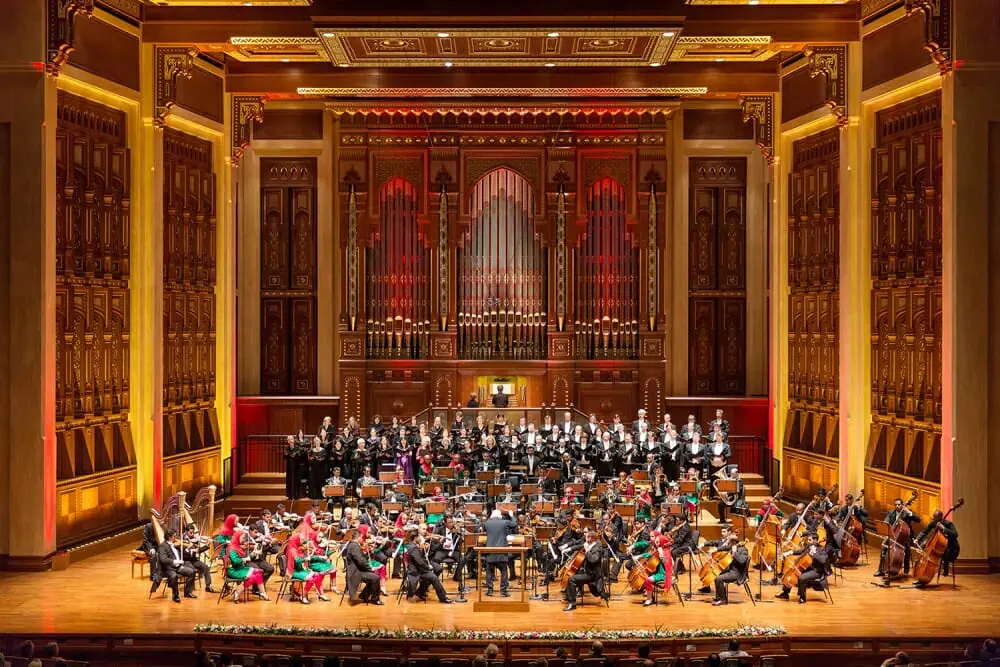 Only Omani nationals play in the Royal Oman Symphony Orchestra. (Credit: Khalidalbusaidi)
Only Omani nationals play in the Royal Oman Symphony Orchestra. (Credit: Khalidalbusaidi)
If truth be told, Arab opera wouldn’t be near the top of my list of desert island discs. Even so, it’s hard not to be impressed by the scale of the production and the passion of the performers. As members of the cast return to the stage to take a curtain call, I rise to my feet along with the rest of the audience.
“It (ROH Muscat) has increased local pride and enriched the general tenor of life in the city,” says Fanni, joining the ovation. “Standards set by the Royal Opera House and the creativity witnessed in top-notch productions like this have served as a source of inspiration.”
Suitably invigorated, I make my way back to the Merc. Abdul Rashid is poised with a question. “Did you enjoy the performance, sir? Would you like to listen to some music?” I pause for a second and reply in the affirmative. It’s the only possible finale to a night at the opera.
Text by Duncan Forgan for GHM Journeys.
Featured image: The opera house can accommodate 1,100 people for a performance. Tourists can visit the opera house in the morning from 8:30 to 10:30 am. (Credit: Khalidalbusaidi)
First published on 18 September 2019.

